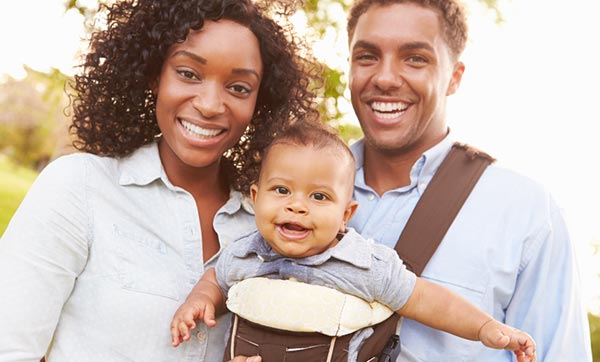Back
New Moms: Optimal Positions for Carrying Your Baby
By Dr. Christine Martirez PT, DPT on 2/16/2024

The joy of carrying your precious bundle comes with the responsibility of ensuring both your baby's safety and your own comfort. The way you position and carry your baby plays a crucial role in promoting healthy development for your little one and preventing discomfort for yourself. In this blog post, we'll explore common pitfalls in baby-carrying positions and introduce optimal postures to enhance the well-being of both you and your baby.
Common Pitfalls: Poor Baby-Carrying Positions
Hunched Shoulders and Rounded Back:
Often, parents unknowingly adopt a posture with hunched shoulders and a rounded back while carrying their babies. This can lead to discomfort and strain on the upper back and neck.Glute Gripping
: Often, we see parents gripping their glutes in order to find stability. This chronic muscle gripping can lead to pelvic floor tightness, hip and core weakness.Unstable Hip Position:
Carrying a baby on one hip without proper support can cause an uneven distribution of weight, potentially leading to hip discomfort and misalignment.Forward Head Posture:
Parents may lean their heads forward to be closer to their baby, contributing to forward head posture. Prolonged forward head posture can result in neck pain and tension.Incorrect Baby Positioning:
Placing the baby in a position that doesn't support their natural spine and hip development can lead to issues such as hip dysplasia and discomfort for the baby.
Optimal Postures for Comfortable Baby Carrying
Neutral Spine Alignment:
Maintain a neutral spine position, avoiding excessive rounding or arching of the back. Stand tall with your shoulders relaxed, and engage your core muscles to provide stability.Spread the Load:
When carrying your baby, distribute their weight evenly across your hips and shoulders. Consider using a carrier or wrap that supports the baby's weight and keeps them close to your center of gravity.Switch Sides Regularly :
If you're carrying your baby on one hip, switch sides regularly to prevent muscle imbalances and discomfort. This helps distribute the load evenly on both sides of your body.Elevate Your Baby to Eye Level:
Instead of leaning forward, bring your baby closer to your chest or elevate them to eye level. This minimizes the strain on your neck and upper back while allowing for bonding and interaction.Supportive Baby Carriers:
Invest in a supportive baby carrier that promotes healthy hip positioning for your baby. Look for carriers that distribute the baby's weight evenly and provide adequate support for their developing spine.Use Both Arms:
Whenever possible, use both arms to support your baby. This helps prevent muscle strain and promotes balanced muscle development.
Comfort for Both: Aligning Well-Being
Listen to Your Body:
Pay attention to how your body feels while carrying your baby. If you experience discomfort or pain, consider adjusting your posture or trying different carrying positions.Take Breaks:
Don't hesitate to take breaks and give your body a rest. Laying your baby down or using a stroller for short periods can provide relief for both you and your little one.
A Comfortable Journey Together
Choosing optimal postures for carrying your baby is not just about physical comfort but also contributes to the overall well-being and development of both parent and child. By maintaining a neutral spine, distributing the load evenly, and investing in supportive baby carriers, you create a nurturing environment that allows for bonding and comfort. Embrace these optimal postures to embark on a comfortable and joyful journey as you carry and nurture your precious little one.
Read More:
Fascial Counterstrain of the Musculoskeletal System By Shannon Strauch, PTA, STMT-1 on 10/21/2024 How treating cartilage and fascia can help reduce joint pain and improve organ function The Impact of Long-Distance Cycling on the Pelvic Floor: Pudendal Nerve and Pelvic Dysfunction By Dr. Christine Martirez PT, DPT on 10/18/2024 Learn how long distance cycling can impact the pelvic floor
Are you ready to live pain free?
Request An Appointment